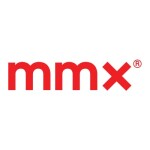The protection of intellectual property was a major strategic objective for brand holders long before the internet took over our lives. Today more than ever, organisations need to commit resources to protect their brands from abuse and infringement, both in terms of revenue and human capital.
Domain names are now critical digital assets for most ambitious brands, allowing them to be present in every global market, 24 hours a day, seven days a week. However, such essential assets for increasing brand value, revenue and reputation also have their threats. The war against IP infringement and abuse is fought in every country, every minute of the day. Global domain protection can seem like an overwhelmingly costly exercise, but there are some cost-effective mechanisms available that can provide a solid platform for global brand protection. One such tool is a protected marks list, used for domain name blocking.
The trademark dilemma
One of the challenges that the IP industry has faced for over 30 years is the balance of rights between domain name registrants and trademark holders. Who has the definitive rights to “own” a particular domain name? What happens when the two sides of IP clash?
The first amendment of the US constitution declares: “Congress shall make no law respecting an establishment of religion or prohibiting the free exercise thereof; or abridging the freedom of speech.” Many people have extended this to cover what is published in the digital world and also the de facto rights to owning a domain name. However, IP protection, especially when it comes to domain names that infringe trademarked terms, is less forgiving.
When creating plans to expand the generic top-level domain (gTLD) space over a decade ago, the Internet Corporation for Assigned Names and Numbers (ICANN) commissioned a group of IP experts around the world to create a plan for the proposed expansion. One of their recommendations, in a report submitted in 2009, was the creation of an Intellectual Property Clearinghouse. This proposed mechanism would allow brand holders to have the automatic right to register domain names matching their trademarks during a sunrise period, before they became available to the general public.
The proposal didn’t receive universal approval, especially from the brand holder community, which raised concerns about the additional costs that would be incurred in protecting their existing IP. However, the Trademark Clearinghouse (TMCH) was implemented for brand holders in 2013.
RPMs: a rundown
With the introduction of the TMCH, discussions were revived about rights protection mechanisms (RPMs) that were to be introduced to address the concerns of the brand holder community. One of the most vocal contingents has been the Coalition Against Domain Name Abuse (CADNA), which was supportive of RPMs such as perpetual blocks and protected trademark lists. It even lobbied the ICANN community to mandate that every new gTLD registry implemented some level of RPMs.
However, in the end, only three registries developed their own Domain Protected Marks List (DPML): Donuts, Rightside Registry (which merged its DPML into Donuts’ when the two companies were integrated) and Minds + Machines, which called its product MPML. In total across the three registries, over 250 gTLDs, or around 40% of the new gTLD strings, would be covered by RPMs.
All three variants worked in the same way. Each required an active TMCH object and would then block the protected mark in all respective gTLDs for as long as the TMCH object remained valid or the DPML product offered (in the case of MPML, up to ten years). So for one fixed fee, a brand holder could ensure its trademarks were protected across a large number of gTLDs.
Criticisms of RPMs
Heralded by a significant part of the IP community as a positive step, RPMs were not without their critics when they launched. The need to tie an RPM to the TMCH object was viewed by some as an unnecessary and costly step when the new gTLD programme launched. While the TMCH wasn’t a mandatory product for all registry operators to provide, fewer than half of gTLDs that launched would be covered by the blocking products available. Trademark holders also didn’t like the fact they couldn’t pick and choose which gTLDs within the protected marks lists that the block could be applied to, or that certain ‘premium domain names’ were excluded from the blocking lists. However, as time has worn on, the value of blocking products as effective RPMs cannot be ignored.
Cost-benefit analysis
One of the key problems, which many brand holders didn’t initially consider, is at the core of how infringers damage brand value. Whether for financial gain or reputational harm, bad actors will use relatively simple tactics – one of which is typosquatting – to exploit weaknesses in the way brands protect their IP.
Typosquatting is when someone registers a domain name that is similar but slightly different (usually by one character) to the trademarked brand. Particularly, if the character that has been changed is adjacent to the original character on a computer keyboard, for example centralnic.com may be typosquatted by someone registering centralnoc.com. Internet users looking to visit centralnic.com may inadvertently hit the “o” key rather than the intended “i” key and will be transported to a webpage that is not the one that was intended.
Many brand holders have comprehensive protection strategies in place for their keyword terms such as using domain name monitoring and enforcement services. However, it is often considered too expensive to extend those monitoring solutions to cover a range of variants or common misspellings to totally eliminate infringements. Unfortunately, it only takes one typosquatted domain name to cause reputational and revenue damage that can take years to rectify.
Internationalised domain name (IDN) homographs are also commonly used by malicious third parties to deceive web users. Bad actors substitute Latin script characters with similar looking characters from other scripts such as Cyrillic which still make the domain name look correct to the human eye, but in reality, it is far from it. For example, centralnic.com, which could actually be registered as centraInic.com where the ‘l’ is actually a capitalised ‘i’.
As we age, our brains become more intuitive and honed to read what we think we see rather than what is actually presented to us, and this gives rise to the second issue that brand and IP holders face today: “typoglycemia”. When we read text we mainly focus on the first and last letters of a word, followed by the existence of characters we would expect to find in a word while the exact order of the characters is less relevant for our understanding of a word.
“Bsaed on rscheearch codnucted at Cmabrigde Uinervtisy, it raelly deosn't mttaer in waht oredr the ltteers in a wrod are: the olny iprmoetnt tihng is taht the frist and lsat ltteer be in the rghit pclae. The rset can be a toatl mses and you can sitll raed it wouthit mnay porbelms. Tihs is bcuseae the huamn mnid deos not raed ervey lteter by istlef, but the wrod as a wlohe and in the cntxet of a snetnece.”
Bad actors take advantage of this cognitive trait by registering domains that appear to be something that they aren’t, such as bankofamerlca.com, gooqle.com or quinness.co.uk, which are unlikely to be trademarked terms and thus not be covered by traditional RPMs.
Variant-based RPMs
A more comprehensive solution is required to protect brands from the more fiendish and ingenious tactics used by third parties with nefarious motives. Fortunately, variant-based blocking products such as the AdultBlock from Minds + Machines offer automatic protection against the dangers presented by typosquatters. AdultBlock includes variant labels when the block is applied to a trademarked term across the .adult, .porn, .sex and .xxx gTLDs, which have the potential for reputational damage to trademark holders. Brand holders do not have to create and submit any lists of possible infringing character sets – the implementation of the block automatically covers them for periods of up to ten years, providing peace of mind from brand infringement and reputational damage.
Return on investment
While the protection of reputation is a key criterion for every brand holder, using RPMs such as the protected marks list to eliminate the potential for typosquatting also provides a much more cost-effective solution to a formal brand protection monitoring strategy. The AdultBlock solution costs brand holders around $2.5 per protected mark per day across the four gTLDs, including protection for all of the variants. A standard domain name monitoring solution for one keyword is likely to cost up to $5,000 per annum (or $13.68 if you want a daily figure) and then enforcement costs for any infringing registrations of over $5,000 should a Uniform Domain-Name Dispute-Resolution Policy case be required. Any such action will potentially take months, during which time reputational damage can accrue if the domain name is being used in an abusive manner. For key terms, it makes financial sense for brand holders to invest in the protected marks list as a fundamental brand protection step.
Insurance policy
While the new gTLD programme has not yet hit the transformational heights that we all expected, the level of IP abuse within these new domains has certainly continued to rise. Implementing an RPM such as the AdultBlock will not only ensure reputations of brand holders are protected, but they act as a proven insurance policy against the cost of fighting IP infringers who look to exploit the rising popularity of IDNs and how they can be manipulated to work against our most valuable asset: the human brain.
Stuart Fuller is head of the brand services division, including BrandShelter, at CentralNic, a global domain name registry provider.











